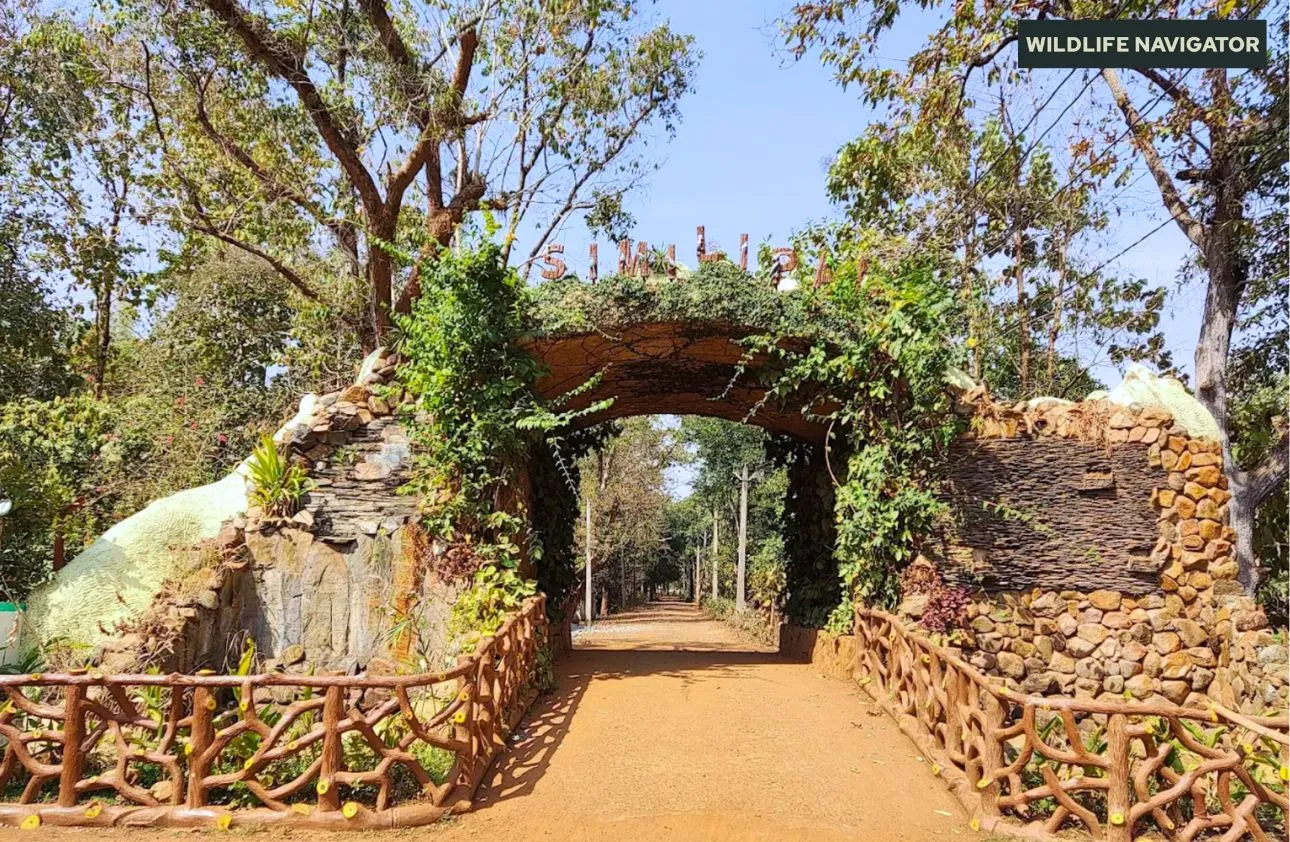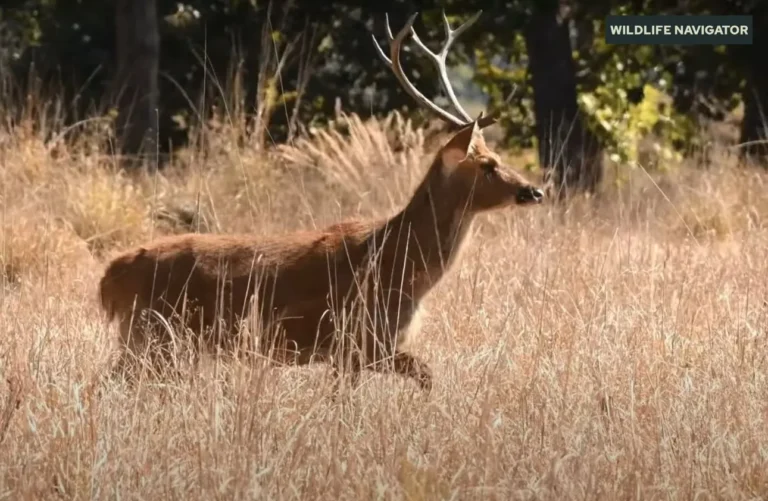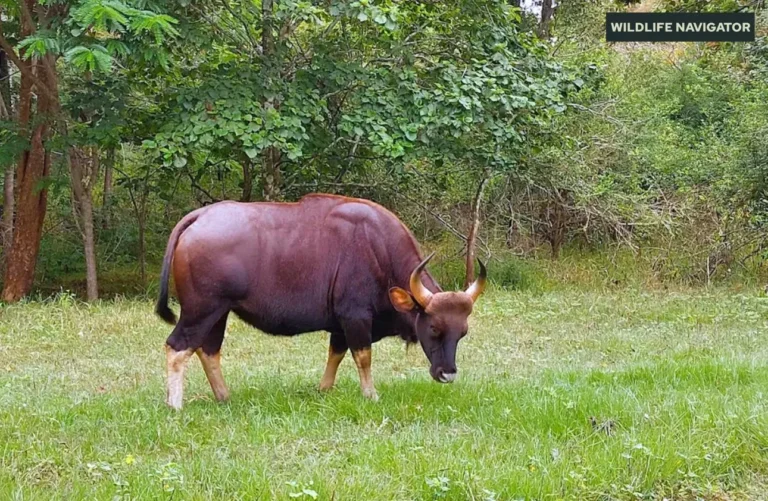Similipal National Park & Tiger Reserve – Complete Travel Guide 2025

Similipal National Park is one of India’s most enchanting wildlife destinations. Sprawling across an area of nearly 2,750 square kilometres, this biodiverse paradise is not only a tiger reserve under Project Tiger but also a UNESCO-recognised Biosphere Reserve. Known for its lush Sal forests, grassy meadows, meandering rivers, and spectacular waterfalls, Similipal offers a captivating blend of wildlife, landscapes, and cultural heritage.
The park gets its name from the Simul tree (red silk cotton), which blooms across the forest with striking scarlet flowers, creating a dramatic backdrop during spring. For wildlife enthusiasts, it is a haven to spot Royal Bengal tigers, Asiatic elephants, leopards, gaur, and more than 230 species of birds. Beyond wildlife, Similipal is equally famous for its towering waterfalls like Barehipani and Joranda, which add a touch of raw natural beauty to the wilderness.
Whether you’re an avid photographer, a nature lover, or someone seeking eco-tourism and cultural experiences with Odisha’s tribal communities, Similipal National Park promises an unforgettable journey into the wild.
History, Geography & Landscape
History of Similipal National Park
The name Similipal is derived from the Simul tree (red silk cotton), which grows abundantly across the region and paints the forest in vibrant red during spring. Originally, this region served as the hunting grounds for the rulers of Mayurbhanj, who prized it for its rich wildlife population. In 1956, Similipal was first declared a wildlife sanctuary, covering an area of 2,200 sq. km.
Later, in 1973, it was brought under Project Tiger and declared a Tiger Reserve to protect the dwindling population of the Royal Bengal Tiger. In 1980, it gained the status of a national park, and in 1994, Similipal was recognised as part of a Biosphere Reserve. Today, it stands as a globally significant ecological zone and a proud representative of Odisha’s natural heritage.
Geography & Landscape
Spread over an expansive 2,750 sq. km, Similipal is the second-largest national park in India. The park lies in the Mayurbhanj district of northern Odisha, forming part of the Eastern Ghats. Its altitude ranges from 559 metres to 1,178 metres above sea level, creating diverse climatic conditions that support a wide variety of flora and fauna.
The terrain of Similipal is a picturesque mix of rolling hills, lush valleys, dense forests, rivers, and grasslands. It is watered by several rivers like the Budhabalanga, Khairi, and Bhandan, which carve through the forest and feed some of the most famous waterfalls of Odisha. The Barehipani Waterfall (399 metres, India’s second-highest) and Joranda Waterfall (150 metres) cascade down rocky cliffs inside the park, creating breathtaking natural spectacles.
Similipal’s landscape is dominated by Sal forests, interspersed with patches of tropical deciduous trees and grasslands. Its varied topography and climate make it one of the most biodiverse regions in India, supporting everything from apex predators to rare orchids.
Similipal Tiger Reserve
Similipal is not just a national park but also one of India’s most important tiger reserves. It was brought under the ambit of Project Tiger in 1973, recognising its role in conserving the Royal Bengal Tiger in eastern India. Covering a core area of about 850 sq. km and a buffer zone of nearly 1,200 sq. km, the reserve forms a massive protected landscape that is vital for both tigers and elephants.
Conservation Significance
Similipal National Park is part of the Mayurbhanj Elephant Reserve, making it equally important for Asiatic elephant conservation. Together, the tiger and elephant populations represent the park’s ecological balance and highlight its role as a stronghold for endangered species. The forest is also home to Indian bison (gaur), leopards, wild dogs, and rare birds, ensuring a healthy predator-prey balance.
In 1994, Similipal National Park was included in the UNESCO World Network of Biosphere Reserves, and in 2009, it was officially recognised under UNESCO’s Man and Biosphere Programme. This recognition emphasises its global ecological value and the need for sustainable conservation.
Core vs. Buffer Area
The core area is strictly protected, with limited human interference to safeguard tiger breeding habitats. The buffer zone, on the other hand, balances wildlife conservation with human activities, including eco-tourism and tribal settlements. This unique zoning ensures both biodiversity preservation and livelihood support for local communities.
Today, Similipal Tiger Reserve stands as a symbol of India’s dedication to conserving its big cats, elephants, and rich biodiversity, while also preserving the traditional lifestyle of Odisha’s tribal communities.
Wildlife in Similipal National Park
Similipal National Park is a treasure trove of biodiversity, making it one of the most fascinating wildlife destinations in India. Its varied landscape—ranging from dense Sal forests to open meadows—provides shelter to an extraordinary range of animals, birds, reptiles, and plants.
Big Cats
The pride of Similipal lies in its population of Royal Bengal Tigers and Indian leopards. Though tiger sightings are rare due to the park’s dense vegetation, the reserve plays a crucial role in sustaining their population in eastern India. Leopards, on the other hand, are more adaptable and often spotted in the buffer areas.
Elephants
Similipal National Park is equally famous for its large herds of Asiatic elephants. They roam freely across the valleys and grasslands, often seen near waterholes, especially during summer. Their presence makes the park part of the Mayurbhanj Elephant Reserve, one of the key elephant habitats in India.
Other Mammals
The forest supports a rich diversity of mammals such as gaur (Indian bison), sambar deer, chital, wild boar, giant squirrels, sloth bears, and wild dogs (dholes). These prey species maintain the ecological balance and serve as the backbone of the food chain.
Avian Diversity
Similipal is a paradise for bird lovers, with over 230 recorded species. The Indian peafowl, hornbills, red junglefowl, hill myna (the state bird of Odisha), crested serpent eagle, and Malabar pied hornbill are some of the highlights. Migratory birds also visit the region during winter, adding to its avifaunal richness.
Reptiles & Amphibians
The park is home to several reptiles and amphibians, including mugger crocodiles, snakes like king cobra and python, and a variety of freshwater turtles. These species thrive in the numerous rivers, streams, and wetlands spread across the park.
Together, this diverse range of wildlife makes Similipal National Park not just a tiger reserve but a complete ecosystem that supports countless life forms, many of which are rare and endangered.
Safari & Attractions in Similipal National Park
A trip to Similipal is incomplete without experiencing its safari adventures and exploring the park’s natural attractions. Unlike some other tiger reserves, Similipal offers a unique mix of wildlife safaris, breathtaking waterfalls, and cultural encounters with tribal communities.
Jeep Safari in Similipal
Visitors can explore the park through jeep safaris, which are organised from designated entry points. The most popular gates include Jashipur and Pithabata, where permits are issued. Safaris generally take tourists deep into the core and buffer areas, giving them a chance to spot elephants, deer, peacocks, and, with some luck, tigers and leopards. The dense Sal forests and open meadows make every safari ride an immersive wilderness experience.
- Safari Timings: Usually conducted in the morning and afternoon.
- Booking: Safari permits can be booked online through the Odisha Forest Department’s official website or arranged on arrival (subject to availability).
- Experience: Apart from wildlife, safaris cover rivers, valleys, and waterfalls, offering a complete nature tour.
Attractions Inside Similipal
Beyond safaris, Similipal is dotted with scenic and cultural attractions:
- Barehipani Waterfall – At 399 metres, it is the second-highest waterfall in India, surrounded by lush green valleys.
- Joranda Waterfall – A single-drop waterfall plunging 150 metres, creating a spectacular sight.
- Tribal Villages – The park is home to several tribal communities like the Santhal, Kol, and Munda, where visitors can witness traditional lifestyles, handicrafts, and cultural heritage.
- Eco-Tourism Sites – Villages like Gurguria, Chahala, and Jamuani offer eco-tourism stays, allowing visitors to stay close to nature while supporting local livelihoods.
Together, the safari rides and natural attractions make Similipal a perfect blend of wildlife adventure and cultural exploration, something not many national parks in India can offer.
Best Time to Visit Similipal
Like many national parks in India, Similipal National Park remains closed during the monsoon months due to heavy rainfall and safety concerns. The park usually opens for visitors from October to June, making this the ideal window to plan a trip. Each season offers a slightly different experience:
Winter (November – February)
- Weather: Pleasant and cool, with temperatures ranging between 10°C and 18°C.
- Experience: Ideal for safaris and sightseeing. The crisp winter air makes walking through forests and spotting animals much more comfortable. Migratory birds also visit the region during this season, making it perfect for birdwatchers.
Summer (March – May)
- Weather: Hot, with daytime temperatures often rising above 35°C.
- Experience: Best time for wildlife sightings, especially elephants and tigers, as animals gather near waterholes and rivers to quench their thirst. For photographers and wildlife enthusiasts, this season offers excellent opportunities.
Monsoon (June – September)
- Weather: Heavy rainfall transforms the park into a lush green paradise.
- Experience: The park remains closed to tourists during this period to protect the terrain and ensure visitor safety. However, the surrounding Mayurbhanj district is incredibly scenic during the rains.
How to Reach Similipal
Similipal National Park is located in the Mayurbhanj district of northern Odisha, and though it is tucked away in a relatively remote region, it is well connected by road, rail, and air. Travellers can choose the most convenient route depending on where they are coming from.
By Air
- The nearest airport is Biju Patnaik International Airport, Bhubaneswar, about 190 km away.
- Another option is Netaji Subhash Chandra Bose International Airport, Kolkata, around 260 km from Similipal.
- From the airport, taxis and buses are available to reach Baripada, the gateway to the park.
By Rail
- The closest railway station is Baripada Railway Station (around 50 km from the park entry).
- Other nearby stations include Balasore (80 km) and Jamshedpur (115 km), which have better train connectivity from major Indian cities.
- From these stations, one can hire a cab or take a bus to the park.
By Road
- Similipal is well connected by road, with National Highway 18 passing through Baripada.
- Regular buses run from Bhubaneswar, Cuttack, Balasore, and Kolkata to Baripada.
- Visitors can also hire private taxis or self-drive to the park for convenience.
Accommodation in Similipal
Staying near Similipal National Park is a unique experience in itself, as most of the accommodations are designed to blend with the natural surroundings. From government-run forest rest houses to eco-tourism cottages and private lodges, visitors have a variety of options to choose from depending on their budget and preferences.
Forest Rest Houses & Guesthouses
The Odisha Forest Department operates several rest houses and guest lodges inside and around the park. Popular ones include Gurguria, Jamuani, Kumari, Chahala, and Ramatirtha. These accommodations provide basic but comfortable facilities and are best for travellers who want to stay close to nature.
Eco-Tourism Cottages
Similipal is part of Odisha’s growing eco-tourism network. Eco-cottages in places like Barehipani, Kumari, and Jamuani allow tourists to stay amidst forests while enjoying facilities like guided treks, campfires, and local tribal cuisine. These eco-stays also support the livelihood of nearby communities, making them a sustainable choice for conscious travellers.
Private Hotels & Lodges
For those who prefer more comfort and amenities, Baripada town (about 50 km from the park) has a range of hotels, lodges, and resorts catering to different budgets. These are ideal for families and travellers who want better connectivity while visiting the park during the day.
ravel Tips for Similipal National Park
Visiting Similipal National Park is an exciting adventure, but a few practical tips can make your trip safer, more enjoyable, and eco-friendly.
1. Safari Permits
- Book in advance through the Odisha Forest Department’s official website or at the entry gates (Jashipur or Pithabata).
- Keep a photo ID handy, as it is required for entry and safari permits.
2. Clothing & Gear
- Light cotton clothes for summer and warm clothing for winter.
- Comfortable walking shoes for forest trails and waterfall visits.
- Binoculars and a camera for wildlife and bird photography.
3. Health & Safety
- Carry a basic first-aid kit.
- Avoid venturing into the forest without a guide.
- Follow all park rules, including no littering and no loud noises, to protect wildlife.
4. Eco-Friendly Travel
- Respect tribal communities and avoid disturbing their daily life.
- Do not pluck plants or disturb wildlife.
- Support eco-tourism cottages and local handicrafts to benefit the local economy.
5. Best Practices for Wildlife Spotting
- Early morning or late afternoon safaris are the best for wildlife sightings.
- Stay silent and maintain distance from animals for safety and minimal disturbance.
By following these simple tips, your visit to Similipal will be safe, enjoyable, and respectful of nature, ensuring that this pristine reserve remains protected for generations to come.
Conclusion
Similipal National Park & Tiger Reserve is more than just a wildlife destination; it is a living ecosystem where nature, wildlife, and culture coexist in harmony. From the majestic Royal Bengal tigers and Asiatic elephants to the breathtaking Barehipani and Joranda waterfalls, the park offers a unique experience that combines adventure, photography, and eco-tourism.
Beyond its natural beauty, Similipal is also home to tribal communities whose rich traditions and sustainable lifestyles add a cultural dimension to your visit. Its status as a UNESCO Biosphere Reserve and a Project Tiger reserve highlights its global ecological importance.
Whether you are a wildlife enthusiast, a nature lover, or an eco-tourist, Similipal promises an unforgettable journey into one of India’s most pristine forests. A visit here is a reminder of the importance of conservation, responsible travel, and appreciation for the wild, making it a must-visit destination for anyone seeking to experience the true essence of Odisha’s natural heritage.





